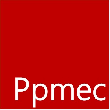Banca de DEFESA: CAMILO LELLIS DOS SANTOS
Uma banca de DEFESA de MESTRADO foi cadastrada pelo programa.STUDENT : CAMILO LELLIS DOS SANTOS
DATE: 12/09/2025
TIME: 08:00
LOCAL: on-line
TITLE:
Study of the quality of plasma cutting on carbon steel by varying the nozzle height, speed, and current.
KEY WORDS:
Plasma cutting, Surface Roughness, kerf, cutting inclination
PAGES: 78
BIG AREA: Engenharias
AREA: Engenharia Mecânica
SUBÁREA: Processos de Fabricação
SPECIALTY: Processos de Fabricação, Seleção Econômica
SUMMARY:
Plasma cutting is widely used in industry to process conductive materials, such as SAE 1020 steel, due to its versatility in complex cutting, cost-effectiveness, and efficiency. However, the surface quality of the cut varies depending on operational settings, influencing technical applications and productivity. Research in this area not only contributes to these improvements but also helps standardise operations in CNC systems, increasing process efficiency. Therefore, this study aimed to evaluate the surface quality of plasma cutting on SAE 1020 carbon steel, considering two directions of coordinate table movement (longitudinal and transverse) and the influence of parameters such as speed, current, and nozzle-to-material distance. The experiments were performed with an ESAB Handyplasma 45i hand plasma source coupled to a CNC coordinate motion system. The nozzle movement speed, source current, and nozzle height relative to the material were varied. Surface roughness was measured with a Mitutoyo SJ-400 roughness meter in the longitudinal (X-axis) and transverse (Y-axis) directions. The response surface method (RSM) and analysis of variance (ANOVA) were used as analytical techniques to define the interaction between the parameters and identify the optimal conditions. The results show that lower roughness values were obtained with reduced travel speeds (heat flux optimisation), higher currents (generating greater arc stability), and a shorter nozzle-to-material distance (improved precision). Conversely, the transverse (X-axis) direction presented lower average roughness compared to the longitudinal (Y-axis) direction. The study shows that adjustments in speed, current, and nozzle height are decisive for the quality of plasma cutting on SAE 1020 steel. The combination of low speed, high current, and a shorter nozzle distance minimises roughness, favouring industrial applications that require precision. The study of kerf dimension and inclination demonstrated that higher current values and lower travel speeds provide the best combinations for improving the quality of the cut region.
BANKING MEMBERS:
Presidente - 2190171 - LINCOLN CARDOSO BRANDAO
Interno - 1860440 - CARLOS HENRIQUE LAURO
Externo à Instituição - SANDRO PEREIRA DA SILVA - UFLA




